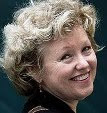It seems appropriate that my first blog should be “What I did on my summer vacation” since school started for us early in September.
As part of a Summer Service Learning Program (SSLP), which is part of Tsinghua University's "Educational Poverty Alleviation Program," I went to China from July 10-31. Tsinghua is considered to be one of the top Chinese universities in the country. There is a debate as to whether it is Beijing University or Tsinghua is the top university--it depends upon who you ask :-), but Tsinghua is referred to as the “MIT of China.” This year's SSLP program is being funded by the Tseng Hin Pei Charity Fund out of Hong Kong. A USD math professor grew up with the president of the foundation, and when USD's Center for Community Service Learning was approached as considering the SSLP for USD students, the current director was unable to attend; consequently, I was offered this tremendous opportunity to evaluate the program as a possible CSL and/or International Study Abroad program. One of the many sites possible is Inner Mongolia, and I leaped at the chance.
Thirty different teams were deployed throughout rural sites in China beginning on July 17th and ours left for Inner Mongolia on the 18th. The team was composed of five Tsinghua University students--3 males, 2 females ranging in age from 19 to 20. They are enthusiastic, conscientious, and so hard working. The two American students are quite the sensation since they are both blonde and blue eyed. Every where we go on campus or in the city of Wulanchabu City, they are swamped by the Chinese students who want their picture taken with them. The number of cell phone photos of the two will be circling the city.
Wulanchabu City (in Huade County) is such an interesting city, and most striking is the fact that there are NO MONGOLS to be found in the entire city! Through the process of “Hanification” where those of Han background are “encouraged” to migrate to remote areas (such as Tibet, Xinjiang, and Inner Mongolia), the indigenous population is gradually forced out. As a consequence, the only possibility of seeing any Mongols would be to travel to the capital which is five hours away further east from Wulanchabu. So much for those images of Mongols riding their ponies across grasslands pictured on the “official” website for the county. The school—Huade Number 1 refers to the fact that is the first one built in this city. The school is relatively new, and the school building where we taught was built in 2008. Classrooms are definitely designed for limited interaction with a unit of six seats with a long writing surface attached on the back are bolted to the floor. The seating units all face forward, of course. The technology, however, was impressive. There is a "smart box" in the front which contains a computer that can project onto a large screen. It also contains a state-of-the-art overhead projector (much better than the ones USD has!) On the first day, students were randomly divided into 5 different teams (to coincide with the 5 college students from Tsinghua University). Each team was to develop a team name, a team slogan, and a team song. It was fun to have them do this ice-breaking, team-building exercise. The five teams named themselves: Winged Dream, Crossover, Key to Fighting, Golden Key, and Flagship. Each day, there was some form of competition that involves the awarding of points for participation (points for answering questions, especially during the English lessons, points for coming to the board and answering) and the competition was quite fierce because the winning team will get a prize.
The first night's activities (July 20th) were so hilarious. Teams had to play "telephone" but in pantomime, and as the pantomime went down the line, by the end no one could have possibility guessed what the "traditional Chinese" phrase was. The point of the activity was to highlight how information is transformed from one source to the other leading to the possibility of total misinterpretation. Thus, one of the other points was that in order to learn more effectively, it required students to look up information first-hand rather than relying on others to relay the information. This was followed by an activity where teams formed circles with the instructions that they had to remember who was on their left and right; students were instructed to move about freely, and when the moderator called time, they were to freeze and then reconnect their hands with the original persons on their left and right. This produced a huge tangled mess of humanity. The goal was to unravel this twisted mess into one complete circle without ever disconnecting their hands. This activity was to develop communication, cooperation, and strategy (not to mention body coordination). It was amazing to watch how students figured out how to “game" the activity, and just how quickly once strategies were in place how the teams reached their objective. It was so much fun.
Although there was supposed to be small breaks in between the activities, the students clamored for everyone to continue. The next activity involved assigning females one value and males another; they circled around, and when the moderator announced a figure, the students had to scramble to form a team of at least three people that represented that value. At least one female had to be in a group. Those who are not able to form a team had to sit out--a sort of mathematical musical chairs. At the end, six males who were eliminated and had to come in front of the entire group and were subjected to doing something demanded by the moderator who asked for "activities" from the crowd. The first hapless group and to strut forward while saying, "We love you all; we love you all.” This was performed to hoots and howls from the entire audience. Despite a long day, the activities go well into evening, and the group reluctantly go back to their dorms/homes at 10:30 P.M.
Each day begins early for students who routinely arise at 5 A.M., attend classes until noon; rest until 2:20 when classes resume until 4:45. Dinner is at 5. Evening class resumes at 7 and ends either at 9 or 9:30. At that time, they go back to the dorms (10/room for girls; 6-8/room for boys) where they routinely stay up until midnight to review their work, and during the regular session, to finish homework. I am exhausted from just arising at 6 A.M. and staying until the end.
In deference to my age (which apparently “trumps” my status as “professor”) they refer to me as Grandmother, and when they come into the room in the morning, many come up to make a point of saying hello to me. At Number 1, all the course work in Physics, Biology, Chemistry, Mathematics are designed to help the students pass their Gao Kao--the entrance examinations for college. College entrance is based solely on the scores of their Gao Kao, and the pressure placed upon these students is truly phenomenal. The students who were in this special course are the top students in the Senior level II class (the equivalent to Junior status in the states).
The issue of why so few rural students continue their education is simply a structural one--not enough facilities or teachers to accommodate the number of eligible students. The students are absolutely sweet. They seem young for their age, but it is due to the fact that they do not have much adult interaction. Added to the fact that they really have no free time, it is hard for them to develop a sense of adulthood. Everything is focused on passing the Gao Kao. Yet, in terms of work and study ethic, if US students had one tenth of their dedication, our country would not be 20th in the world. The other day, there was a basketball competition between member of the Yao Ban (number 1) class and members from another Senior Level II class. Students were all aflurry with excitement. Some students only stayed for a short time and then wandered back to the classroom to continue to work on their assignments. It is impressive and, in some way, depressing to think about how much of their lives will be dictated by their scores on the College Entrance exam—the sole determinant of getting into college.
The last day at the Number 1 was the most touching. Students worked feverishly to plan a special party that including singing, presenting gifts of huge banners autographed by everyone, dancing, and eating. The students purchased two beautiful “birthday” cakes complete with candles which they celebrated our collective “birthdays.” There was not a dry eye in the audience. At 10:30, the lights were automatically turned off, and we all slowly worked our way down the stairs. In the front of the school, we made our final farewells with promises to stay in contact. What a memorable experience.
Today, I am still in contact with a dozen of the students who send e-mails. Technology has made it possible to stay in touch in ways that would not have been possible even a few years ago. My plans are to go back next summer with a group of USD students. Thus ends my blog.
Judith Liu
skip to main |
skip to sidebar











We live therefore we write
Followers
We are 11 authors (and a special auxiliary member) who are passionate about what we do. Some of us write for a living, yet all of us scramble to find the time to finish our books -- between research trips to Borneo, Greece and death row, and stand-up comedy shows. Together, we have accumulated expertise across many different genres. We have a great deal to say about the creative process and how to get published. We are bright, articulate, opinionated, compassionate, and committed, not just to our own writing, but to sharing what we have learned along the way. Follow and comment on our blog here, or better yet, invite us to come share our wisdom with you in person. We are available for speaking engagements, book signings and media appearances.
To contact us as a group, please email Caitlin Rother, crother@flash.net, or contact authors individually.
To contact us as a group, please email Caitlin Rother, crother@flash.net, or contact authors individually.
Laurel Corona

Kathi Diamant

Georgeanne "George" Irvine

Divina Infusino

Judith Liu

Zohreh Ghahremani

Marjorie Hart

Susan McBeth

Margaret Dilloway

Elizabeth Cobbs Hoffman

Caitlin O'Connell

Search This Blog
Blog Archive
- May (1)
- April (3)
- March (5)
- February (4)
- January (4)
- December (5)
- November (4)
- October (3)
- September (2)
- August (2)
- July (3)
- June (5)
- May (4)
- April (4)
- March (3)
- February (4)
- January (3)
- December (5)
- November (4)
- October (4)
- September (6)
- August (4)
- July (4)
- June (3)
- May (5)
- April (2)
- March (4)
- February (1)
- January (3)
- December (4)
- November (2)
- October (5)
- September (3)
- August (4)
- July (3)
- March (1)

0 comments:
Post a Comment